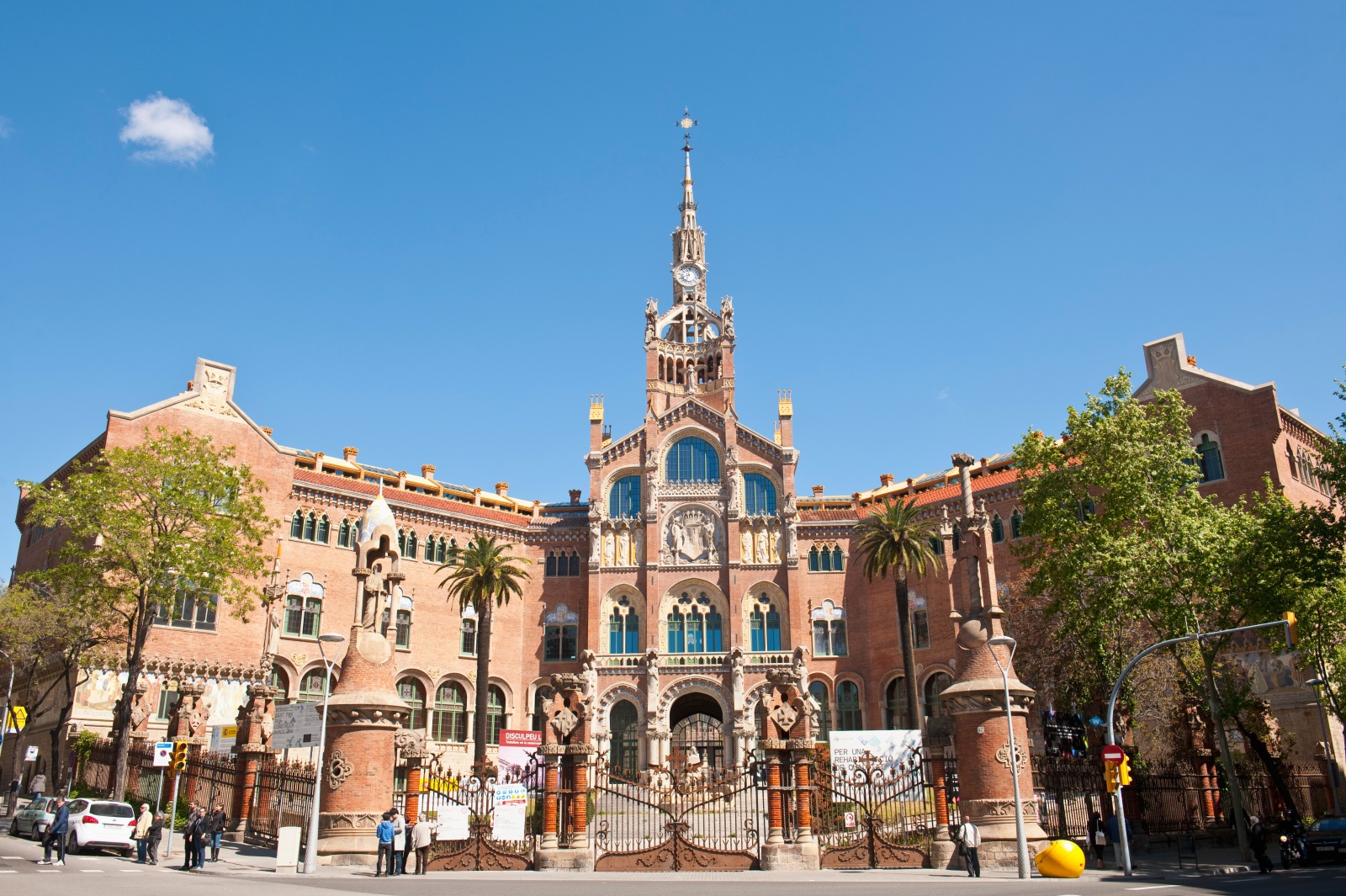
Overshadowed for decades by a star pupil, the Catalan architect Lluis Doménech i Montaner’s greatest structures are finally getting some attention, starting with Sant Pau, a former Art Nouveau-era hospital in Barcelona.
Ironically Barcelona’s—and indeed the world’s—largest Art Nouveau complex is often overlooked by architecture lovers who come to the Catalan capital chanting “Gaudí, Gaudí, Gaudí.” Yet just a few blocks away from architect Antoní Gaudí’s celebrated (if unfinished) Basilica de la Sagrada Familia, is the massive Hospital de la Santa Creu i Sant Pau, designed by Gaudí’s teacher, Lluis Domènech i Montaner, and built between 1902 and 1930.
A UNESCO World Heritage Site since 1997, it emerged last year from a major restoration that scraped off years of unsightly additions and interventions from the structures’ century of service as a working hospital. With all medical facilities now located in modern buildings nearby, Domènech’s original pavilions—with all their neo-gothic tracery and delicate finials, not to mention acres of colorful mosaic tiles and stained glass—gleam anew as the Sant Pau Nouveau Site or Recinte Modernista in Catalan (guided tours from $16).
As visitors tour the expansive property, they learn about Barcelona in the twentieth century, when it was undergoing its greatest phase of growth. Walk a network of underground tunnels that connect the many pavilions on-site, or take them to the gardens, where the domes, multi-colored roofs, and facades are particularly view-worthy.
Like Doménech’s other great public structure in Barcelona, the Palau de la Música Catalana, the hospital—among the most modern in the world when it was built—reveals the city’s enduring aspirations to always improve itself.
More good reads from T+L:
• World’s Top 50 Hotels
• 25 Secret European Villages
• Best Places to Travel in 2015